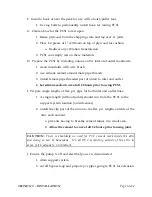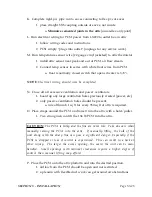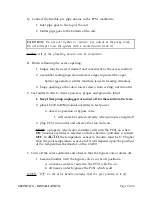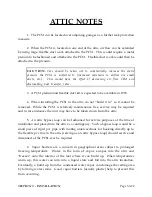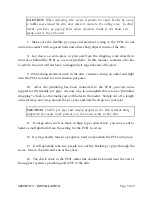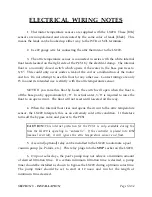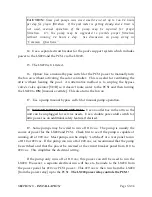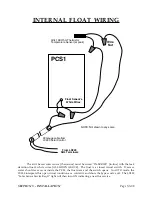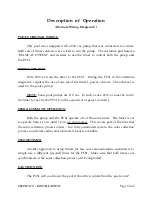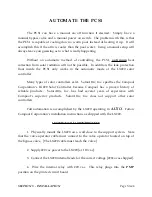
SECTION 3 - INSTALLATION
Page S3-35
Wired this way, the pump timer will not affect the operation of the PCS1 heat
exchange system by being mis-synchronized in a solar context.
7. The LX220 relays provide two sets of contacts rated at 2 hp maximum. If
additional contacts are desired, substitute a different 24 vdc relay that has the correct
amount of contacts desired. OR, connect additional relay(s) in tandem [next item].
8. Additional 115 vac or 230 vac relays can be connected in
tandem
from the
current power relay contacts
to achieve amplification of the power handling
capabilities of the LX220. Follow national and local electrical codes when modifying
relay output circuits to achieve additional power handling capabilities.
9. Some timers provide for a manual override function eliminating the need
for an additional electrical switch and/or circuit if a timer is used. Also, a timer set
to operate both the pump and the PCS1 from 11 a.m. to 7 p.m. can achieve a SEMI-
AUTOMATIC operation of the system without using the LX220. However,
remember that the PCS1 can cool down a pool if the attic is cooler than the pool!
10. The Flowreversalª valve can be automated. This requires an optional
module and a second valve operator. The part numbers are MOD-VLV and FR-
VOR respectively. Theoretically, an automated flowreversal valve would yield
optimum cleaning
and
heating. However, experience questions this. SolarAttic, Inc.
does not recommend the automation of the flowreversal valve.
11. The diagram that follows shows a suggested method and is not a
substitute for national and local codes. Where codes apply, they supersede the
attached wiring diagram. All wiring should be done by a qualified electrician and
must comply with electrical codes.
12. Note that 220 vac power is typically available at the poolÕs pump already
[in most cases]. This power can be tapped for the LX220 to use.
13. We recommend that the poolÕs pump be slaved to the LX220. This will
cause the pump to operate only during the solar collection process which is typically
10 hours per day. If the pump is sized properly, this should provide adequate
filtration. On poor solar days, a timer can augment this by providing a minimum
amount of pump run time for filtration as previously described.
Summary of Contents for PCS1
Page 7: ...SECTION 1 SYSTEM ARRIVAL Page S1 1 SECTION ONE SYSTEM ARRIVAL...
Page 22: ...SECTION 2 HEATING DATA Page S2 1 SECTION TWO HEATING DATA...
Page 28: ...BTUS Vs GPM BTUS Vs T SECTION 2 HEATING DATA Page S2 7...
Page 34: ...SECTION 3 INSTALLATION Page S3 1 SECTION THREE INSTALLATION...
Page 65: ...Attic Installation Photos SECTION 3 INSTALLATION Page S3 31...
Page 66: ...Attic Installation Photos SECTION 3 INSTALLATION Page S3 32...
Page 88: ...SECTION 4 SERVICE Page S4 1 SECTION FOUR SERVICE...
Page 99: ...Common Questions Page 1 of 10 COMMON QUESTIONS...
Page 109: ...Dictionary of Terms Page 1 of 4 DICTIONARY OF TERMS...




